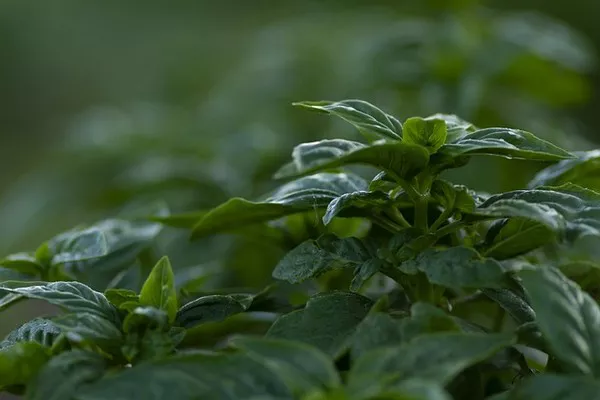Basil, with its vibrant green leaves and distinctive aroma, is a beloved herb in cuisines worldwide. However, its flowers often go unnoticed or underutilized in culinary practices. These delicate blooms possess flavors and aromas that can elevate dishes in unique ways, offering both aesthetic appeal and nuanced taste profiles. In this article, we delve into the fascinating world of basil flowers, exploring their culinary uses, nutritional benefits, and creative applications in the kitchen.
Understanding Basil Flowers
Basil (Ocimum basilicum) is a member of the mint family (Lamiaceae) and is renowned for its aromatic leaves that are commonly used fresh or dried in cooking. The plant produces small, white or lavender flowers that emerge in clusters as it matures. While the leaves are typically harvested for culinary purposes, the flowers, often left to bloom, possess flavors reminiscent of the herb itself but with subtle variations.
Basil flowers come in different varieties, each with its own flavor profile. Sweet basil flowers have a delicate sweetness akin to the leaves but with a slightly milder taste. Thai basil flowers, on the other hand, offer a hint of licorice or anise, adding complexity to dishes. Lemon basil flowers bring a citrusy zing that can brighten up salads and seafood.
Culinary Uses of Basil Flowers
Garnishes and Decorations: One of the simplest yet most effective uses of basil flowers is as an edible garnish. Their vibrant colors—ranging from white to deep purple—make them visually appealing additions to salads, soups, and main dishes. Sprinkling a few basil flowers over a dish not only enhances its presentation but also introduces a subtle basil flavor.
Infusions and Beverages: Basil flowers can be used to infuse beverages such as teas, lemonades, and cocktails. The floral notes complement the herb’s characteristic taste, creating refreshing drinks perfect for warm days. Basil flower-infused water is also a popular option for a subtle, aromatic twist.
Floral Vinegars and Oils: Infusing vinegars or oils with basil flowers imparts a delicate basil essence that can be drizzled over salads or used in dressings. The process involves steeping the flowers in vinegar or oil for a few weeks, allowing the flavors to meld. Basil flower vinegar adds a floral note to vinaigrettes, while basil flower oil can be brushed on grilled vegetables or used as a dip for bread.
Herb Butters and Spreads: Incorporating basil flowers into herb butters or spreads introduces a nuanced basil flavor to bread, pasta, or grilled meats. Simply mix chopped basil flowers into softened butter along with other herbs and seasonings of your choice. This compound butter can be used to finish off dishes or as a spread for bread and sandwiches.
Desserts and Baked Goods: Basil flowers can lend a unique twist to desserts, adding a subtle herbal note that pairs well with sweet ingredients. Infuse cream or milk with basil flowers for use in custards, ice creams, or panna cotta. Chopped basil flowers can also be folded into cake batters or cookie doughs to impart a delicate basil flavor.
Herbal Syrups and Jams: Basil flower-infused syrups and jams offer a creative way to preserve their flavors for later use. These can be drizzled over pancakes, waffles, or yogurt, or used as a glaze for meats and roasted vegetables. Basil flower jam pairs beautifully with cheeses on a charcuterie board, combining sweet and savory elements.
SEE ALSO: How Big Do Basil Plants Get
Nutritional Benefits of Basil Flowers
Beyond their culinary versatility, basil flowers offer nutritional benefits similar to those of basil leaves. They are rich in vitamins A and K, as well as antioxidants such as flavonoids and polyphenols. These compounds contribute to their anti-inflammatory and immune-boosting properties. Additionally, basil flowers contain essential oils that lend them their aromatic qualities, further enhancing their appeal in cooking and holistic health practices.
Harvesting and Storing Basil Flowers
To maximize their flavor and freshness, basil flowers should be harvested at their peak. Choose flowers that are fully open but not yet starting to wilt. Snip the flowers from the plant using clean scissors or shears, taking care not to damage the surrounding foliage. It’s best to harvest basil flowers in the morning when their flavors are most concentrated.
Store basil flowers in a cool, dry place or in the refrigerator wrapped in a damp paper towel. They can be kept fresh for a few days this way. For longer storage, consider freezing basil flowers in ice cube trays filled with water or olive oil. This preserves their flavor for future use in soups, stews, and sauces.
Conclusion
In conclusion, basil flowers are a versatile and underappreciated ingredient that deserves a place in every kitchen. From their delicate flavors to their aesthetic appeal, these blooms offer myriad opportunities for creative culinary expression. Whether usedas a simple garnish or infused into complex dishes, basil flowers bring a touch of freshness and sophistication to any meal. Embrace their potential, experiment with different varieties, and discover the delightful nuances they can impart to your cooking. Let basil flowers inspire your culinary journey and elevate your dishes to new heights of flavor and visual appeal.


